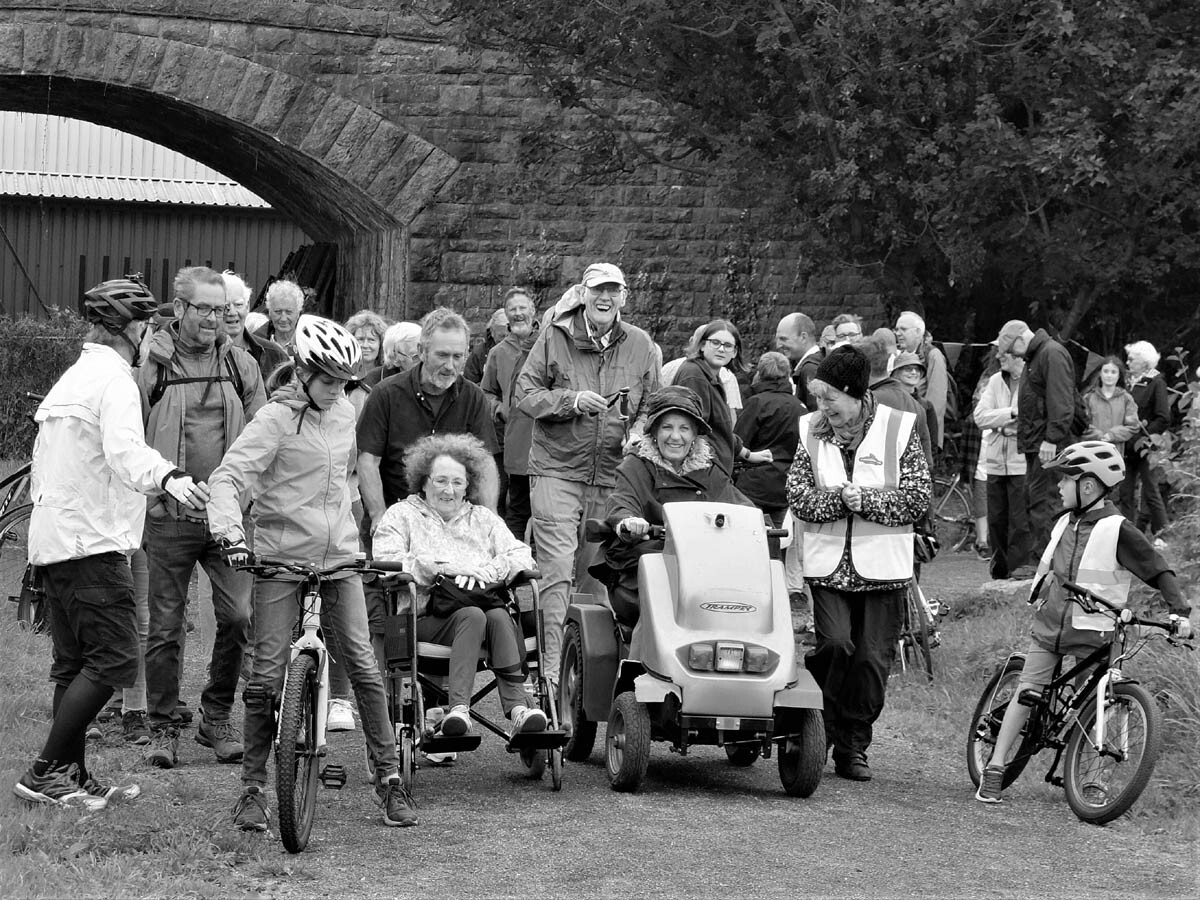
On Saturday September 16, a short section of traffic-free path in rural Somerset was officially opened. It was a small thing in itself, just over one mile in length and, at present, with no onward off-road connection at either end. Nevertheless, it illustrates some very important points.
The path, and others like it currently being developed, owe a great deal to voluntary effort. Volunteers played a major role in identifying and liaising with landowners, in pressing the case for public funding, and in many cases undertaking construction and maintenance work themselves. It is a reminder, if one is inclined to despair at the state of the country, that individuals can still make a difference.
The video illustrates some of the practical work volunteers do, but also a further point. The maker of the video, Graeme Bickerdike, is one of the small group of individuals whose relentless campaigning seems finally to have brought about a policy change within the Department for Transport. The Historical Railway Estate (HRE), a body that, with brazen indifference to public regard, was referred to by the Department as “the Burdensome Estate”, represented the apotheosis of “Treasury Brain”, a myopic focus on the short term and on avoiding expenditure. It has taken 60 years from the Beeching closures for the Department for Transport to see the redundant railway assets it manages as opportunities to promote active travel rather than liabilities to be locked away.
The progress made on active travel in Somerset is also a reminder that local government can make a difference. For years progress stalled in Somerset through a total lack of ambition in our elected representatives. We had our own version of “Treasury Brain”, always looking at cost and never at benefit. Finding the funding for path construction was of course important, but what really made progress possible was having a group of councillors who wanted to do something.

The launch, on a day when the weather was at best indifferent, was attended by around 250 people. Since the two communities connected by the path have only around 1,000 residents between them it was a remarkable figure. People of all ages, and all backgrounds walked, rode, scooted or were pushed from one end of the path to the other for tea, cakes and speeches in Easton Village Hall, serenaded by the Wells City Band. It was a joyous occasion.
I suspect that one reason why the occasion produced so such enthusiasm is that we have forgotten that local authorities exist in order to make things better for people. At a time when public spending is, at best, focused on patching up our decaying infrastructure, it is both a surprise and a delight to see investment simply devoted to improving our quality of life.





